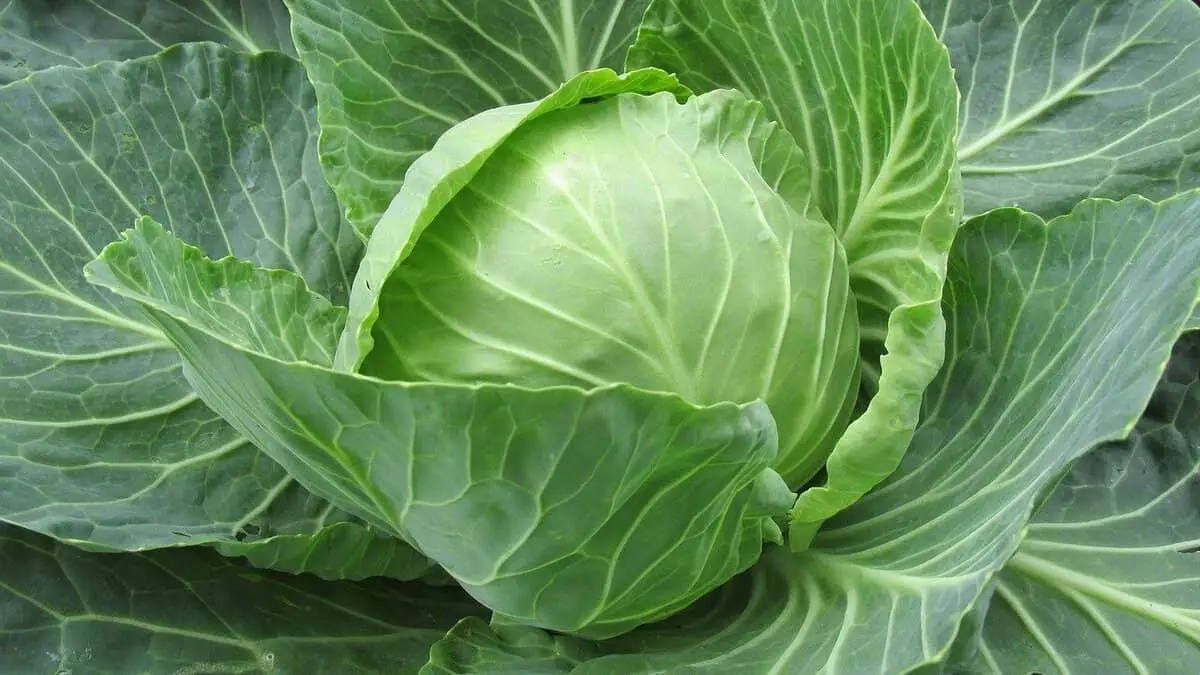How to Grow Cabbage Plants in Gardens
Cabbage is a biennial plant. Having dense leaved heads, it is grown as an annual crop. Being a descendent of Brassica oleracea var. oleracea (wild cabbage), It is a different cultivar but the same species of Cole crops such as broccoli, kale, and cauliflower.
This article focuses on cabbage, its propagation, harvest, storage, and uses.
Generally, cabbages weigh about 1 -2 lb. (500 – 1000 grams). In the regions that have long summer days, cabbages can grow huge in size and weight. In 2012, one of such cabbages weighed 62.71 kilograms (138 lb. 4 oz).
In vegetable markets, you can most commonly find green cabbages. They normally have firm heads. Similarly, purple cabbages have smooth leaves and savoy cabbages have crinkle leaves. However, these cabbages are rarely available.
During the first year, growers pick out the cabbage heads to sell in commercial markets. Some gardeners, intending for seeds, allow the plants to grow for the second year.
Naturally, this vegetable is a good source of dietary fiber, Vitamin C and Vitamin K. You can eat it raw. In most parts of the world, this vegetable is stewed, steamed, fermented (for dishes such as sauerkraut), sautéed, or braised for food.
On the flip side, these plants are prone to various nutrient deficiencies. They are also vulnerable to pests and many fungal, bacterial diseases. So, these plants must be grown separately from other Cole crops to prevent cross-pollination.
Table of Contents
History

Humans domesticated cabbages sometime before 1000 BC. Wild cabbages have been found long before that in western Europe along the limestone cliffs. By the medieval periods, European cuisines included cabbages as a prominent part. However, savoy cultivars were developed only in the 16th century AD.
Similarly, the Asians and Chinese developed their own versions from the Cole crop species. These products are popularly known as bok choy and Napa cabbage. With a taste of success, they further developed their own cultivar of Brassica oleracea. It is called Chinese broccoli (Gai lan)
In the 1500s, cabbage reached American markets by sea. Logistically, this vegetable is easy to preserve. It is also rich in Vitamin C and can prevent scurvy disease. Hence, it became a staple vegetable in the sea voyages.
At those times, the traditional medicine practitioners used the Sauerkraut (fermented raw cabbage) to treat wounds and also to prevent gangrene.
In the modern days, cuisines around the world use cabbages in different dishes. This vegetable has high demands in the global market. In 2018, the global production of brassicas was about 69 million tonnes. China accounted for 48% of the total production.
How to Propagate of Cabbage Plants
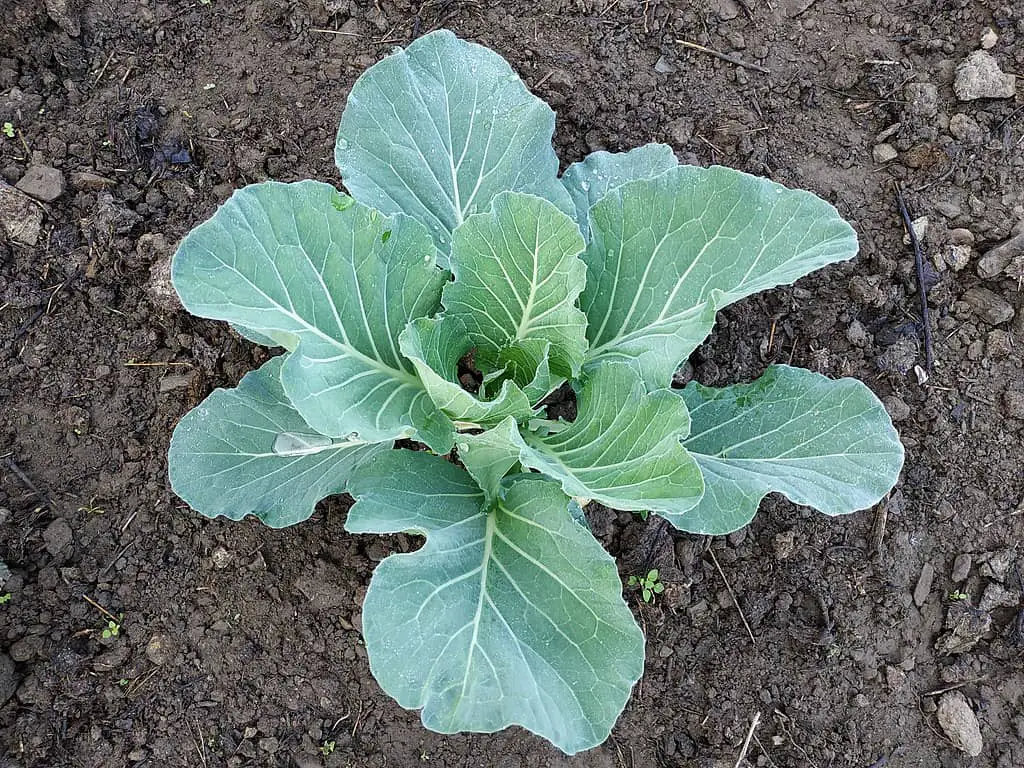
Photo by Nirajan_pant (Wikimedia Commons) (CC BY-SA 3.0)
If the environment is not right, growing cabbage plants can be a challenge for beginners. Preferring cold climates, these plants can be magnets to some common cabbage pests. In addition, we recommend rotation of cabbage plants every few years. This is essential to avoid soilborne diseases.
Light
Generally, cabbage plants do not bloom. Hence, they do not require full sunlight. These plants can also thrive in full sunlight to partial shades. However, providing shades especially during hot months is essential to prevent these vegetables from drying out.
Soil
Typically, these plants prefer to grow in well-draining, rich soils. Drainage is especially necessary as logging waters can cause the heads to rot or split.
Maintain the soil pH level above 6.8. This helps to prevent the clubroot disease, prevailing mostly in acidic acids. Amend the soil with organic matter or compost before planting.
Temperature and Humidity
Generally, these plants thrive well in cool temperatures of spring and autumn. When the temperatures rise above 80-degree Fahrenheit, they begin to suffer. Hence, we recommend you shading them on hot days, at least in the afternoons. Shading is especially important during summers.
Seed Propagation
You can propagate the seeds both indoors and outdoors. start the process about 6 – 8 weeks before the average last spring frost date. For indoor plantings, mix potting soil (2 parts) and compost (3parts) for sowing seeds. For outdoor plants, amend the soil with organic matter or compost before planting.
1) Sprinkle the cabbage seeds on the soil. Then, cover them barely with soil as they need light for germination. Expose the indoor planted seeds to sunlight at least for 6-8 every day.
2) Using a sprinkler system (outdoors), water the seeds and maintain the moisture.
3) Cover the seeds with a platen cover or mulching sheet to avoid pests. It will also help to maintain the soil moisture. As a result, germination occurs quicker.
4) Typically, the seeds will germinate in 7 – 15 days when the temperature is about 20°C.
In 4 – 6 weeks, you can expect the seedlings to grow about 3 – 4 inches tall with 3 – 4 sets of true leaves. After this happens, you can transplant your seedlings outdoors.
Seedling Propagation
In fact, cabbage plants can be grown easily from seedlings than other methods. You can transplant the seedlings (depending on the age) both in spring and summer.
You can transplant your seedlings about 8 – 10 weeks before the expected average last spring frost date. In this way, you can harvest the crop before the summer temperatures rise too high.
Alternatively, purchase or grow the seedlings and transplant them about 12 – 14 weeks before the expected average first autumn frost date. In this method, the cabbage plants are exposed to light frosts. Hence, they have fresh and improved flavors.
For indoor seedlings, make sure to harden them off at least for a week before transplanting outdoors.
1) Using a shovel, dig a hole measuring at least 2 inches in diameter.
2) Place the seedlings carefully in an upright position and fill back the hole with soil. In the meantime, make sure not to damage the fragile roots.
3) Water the seedlings regularly and maintain the soil moistly. Also, these plants require a minimum of 6 hours of sunlight to thrive healthily.
4) As the plants produce cabbage heads, feed them with liquid, organic fertilizers.
In about 4 – 5 months, the cabbages will be ready for the harvest. Also, make sure to space your plants at least 12 -18 inches apart. This helps to provide a sufficient airpath between them.
How to Care Cabbage Plants
These plants need water to grow healthy. So, every week, water two inches/sq. foot.
Generally, 60 to 65° F is the optimal soil temperature for growing cabbage plants. If the temperature falls below 45°F, cover them with protection. Otherwise, they may form bolted or loose heads. Similarly, if the temperature rises above 80 ° F, shade them with arrangements. Otherwise, they may become dry.
After 2 weeks of transplantation, fertilize the plants with balanced NPK (10-10-10) fertilizers. In the early stages, they need nitrogen. So, feed them with nitrogen-rich fertilizer after 3 weeks.
Most importantly, rotate the cabbage crops every few years to prevent the building up of soil-borne diseases.
Splitting
Generally, spitting refers to the cracking of cabbage heads before maturing. This problem is most widely seen in early-season varieties and quick-growing varieties.
Some of the common reasons for splitting include heavy rains, droughts, and overwatering. To avoid splitting, use mulch around the plants. This helps retaining moisture and regulating soil temperature.
Overfertilization, especially at the end of the growing season can also cause splitting. Hence, avoid fertilizing excessively. If required, do not hesitate to consult an expert.
Companion Plants
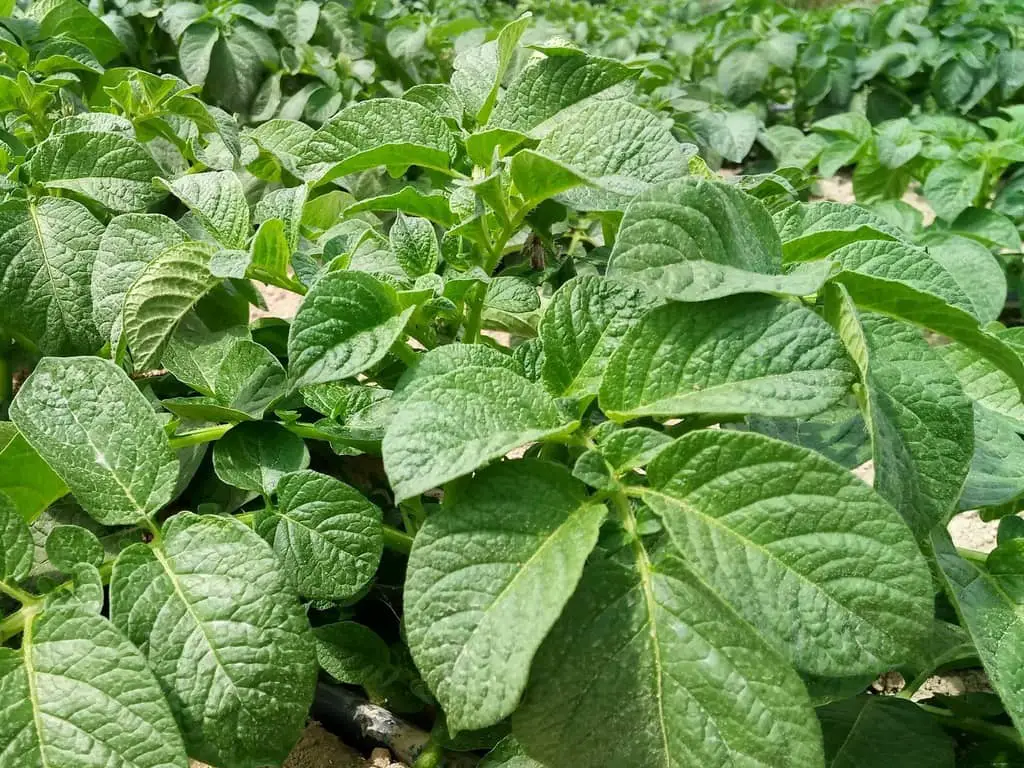
Generally, the best companion plants for cabbage plants include onions, potatoes, beets, garlic, celery, fragrant herbs, and cucumbers.
In fact, some plants can harm the growth of cabbage plants. They include cauliflower, broccoli, tomatoes, and strawberries. Hence, it is recommended to consult an expert before selecting companion plants, unless you have enough information.
Pests and Diseases
Typically, cabbage plants are vulnerable to various pests and diseases.
Pests
Cabbage Loopers
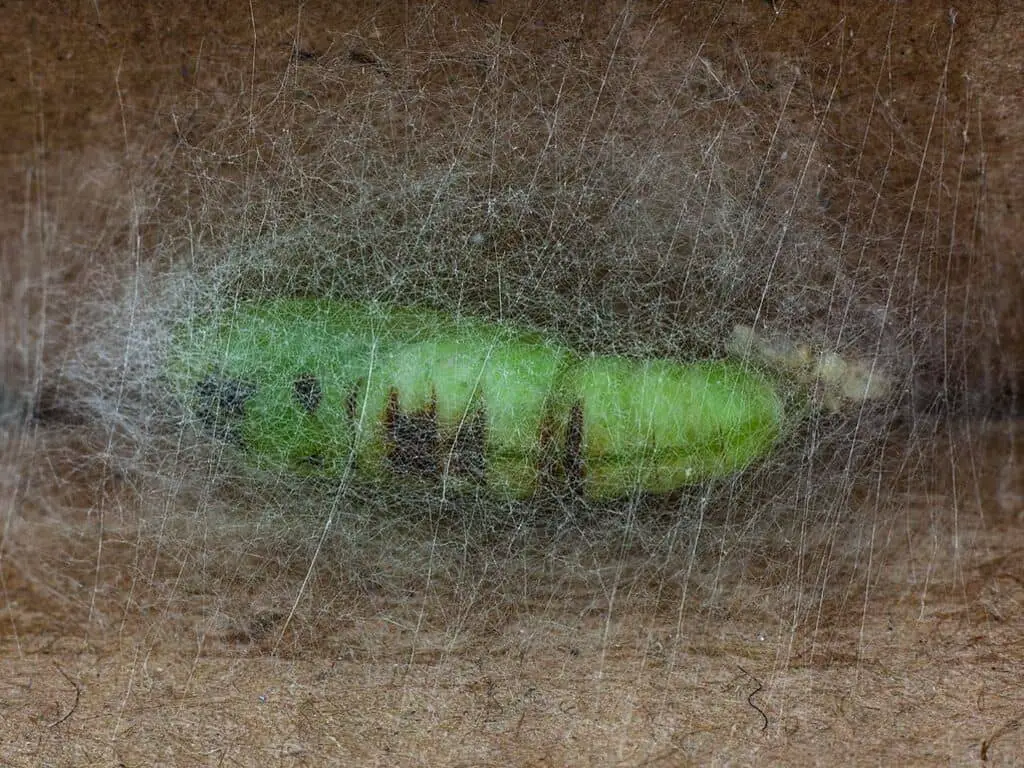
Photo by مانفی ( Wikimedia Commons) (CC BY-SA 4.0)
During the growing season, the cabbage loopers readily infect these plants. Most commonly, they much the cabbage leaves and weaken the plants.
In one day, a single larva can feed on three times its body weight. The larger they grow, the more they feed. Due to their green color, they are difficult to identify.
Usually, the adult moths are greyish-brown in color. They lay small green eggs on the stems and under the leaves. Sometimes, small silky cocoons cover the eggs. These eggs take only a few days to hatch the destructive larvae.
You can use food-grade diatomaceous earth, cayenne pepper, and garlic sprays to deal with Cabbage Loopers
Flea Beetles
Chewing holes in the leaves, Flea beetles damage plants. Overwintering in soils, these insects become active in spring when new foliage develops. The infection further spreads on hot sunny days. In addition, these insects transmit diseases between the plants.
In case of severe infections, the plants die completely. You can use diatomaceous earth and organic neem oil sprays to kill these insects.
Root Maggots
In the spring, adult flies lay eggs around the stem bases. The hatched maggots feed on roots underground, weakening the plants. In addition, the chewed tunnels may attract fungus causing other harmful diseases.
Typically, the infected plants show signs like wilting leaves, decoloring foliage, stunted growth, etc. If the infection is severe, the plants may die.
Cover the young seedlings or sowed seeds with floating covers to avoid these pests.
You can use diatomaceous earth or introduce beneficial nematodes to deal with these pests.
Diseases
Clubroot
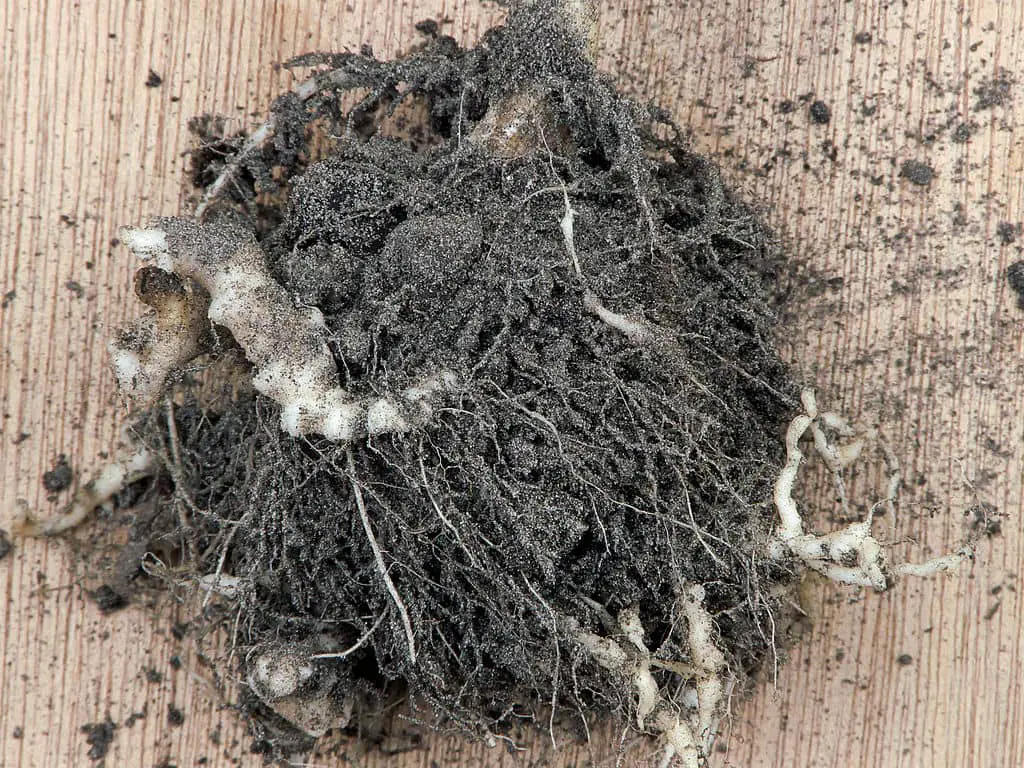
Photo by Rasbak (Wikimedia Commons) (CC BY-SA 3.0)
The soil-borne fungus, Plasmodiophora brassicae causes clubroot in most crucifers including cabbage. Generally, this fungus deforms and rots the underground roots. As a result, the plants die deprived of nutrients and water.
In the early stages of infection, the plants may show symptoms like wilting or decolorization of foliage.
There are many factors contributing to fungal development including moisture and low soil pH. Naturally, the fungal spores can travel through wind, water, pests, and even tools.
In general, you can prevent this disease by using sterilized equipment, increasing soil pH, and practicing rotation of crops. Once infected, the plants have to be disposed of as there is no cure.
Blackleg
The fungus Phoma lingam causes blackleg in cabbage and other cole crops. Typically, it can overwinter under the soil, plant debris, and also infected seeds. This fungus transmits from plant to plant quickly and controlling is difficult.
This fungus mostly infects young seedlings. Typically, it starts with small brown lesions. Then, the lesions expand into larger circles with gray centers. Finally, the infection girdles the plants and kills them.
Once infected, the plants cannot be saved. Hence, prevent the disease by maintaining sanitization, crop rotation, using disease-free seeds, controlling moisture, and allowing sufficient airflow.
Black Rot
The bacterium Xanthomonas causes black rot disease. It infects the plants in wet and warm conditions. In fact, the pathogen travels through the vascular system and infects the whole plant. It also weakens the veins and causes a foul smell.
As a result, the leaves wilt and lose their texture. Severe infection can kill the plant as a whole.
Typically, you can prevent the disease by growing disease-resistant varieties, rotating crops, and maintaining cleanliness.
How to Harvest Cabbage Plants

Generally, the cabbages have a sweet flavor in cool climates. So, harvest them before the warm weather arrives, in spring. If you leave matured heads too long on stems, they may split. Hence, harvest the heads as they mature.
Depending on the variety, the harvesting periods may vary from 70 – 180 days from seeding. However, most green and red varieties can be harvested in about 70 days.
Upon maturing, the heads become firm and measure about 4 – 10 inches across. At this stage, most heads weigh about 1 – 3 pounds.
1) Using a sharp, sterilized garden knife, cut the cabbage heads at their base.
2) For protection, retaining the loose green leaves and remove the discolored or yellow leaves.
3) Shift the heads to a dark, shady and cool place as immediately possible to retain the freshness.
If you desire to harvest two times, just remove the cabbage heads leaving the outer leaves and stem on the soil. Within a few days, new heads shoot up. Harvest the new heads when they are of a baseball size.
After harvesting, remove and dispose of the entire plant immediately. This helps to prevent various diseases. You can also compost the healthy plants, destroying the infected ones.
Preservation
While storing, do not remove the outer leaves. They offer natural protection to the inner layers. Also, do not wash them until you consume them.
In refrigerators, you can store the cabbage heads wrapped in plastics, for about 2 -3 weeks. The plastics help to retain the moisture in the leaves. In perfect root cellar conditions, these vegetables can survive up to 3 months. In any case, make sure the cabbage heads are dry before preserving.
Gathering Seeds
You can also get the most out of the cabbage plants by following the olden’ techniques.
During fall, remove the entire plant. Consume the head and store the roots in a fully maintained root cellar throughout the winter.
In spring, after the grounds thaw, plant the stored roots in the outer gardens.
In a few days, new edible sprouts will develop. You can remove them, consume them raw or enjoy them in your dishes.
By summer, these plants will develop seeds. You can use them in next season planting. However, these plants would not produce full heads as they did in the previous season.
Common Varieties of Cabbage Plants
Early harvest varieties – Stonehead or Primo
Quick maturing variety – QuickStart, Golden Acre
Savoy types – Alcosa (early variety), Wirosa (late variety)
Splitting resistant variety – Early Jersey Wakefield
Small heads (suitable for small gardens) – Gonzales
Disease-resistant variety – Cheers, Blue Vantage
Popular variety – Early Jersey Wakefield
Frost-hardy variety – January King
Tender, sweet taste – Murdoc
Easy-to-grow (Purple varieties) – Red Delight, Red Acre
Health Benefits of Cabbage
Nutrients
Naturally, cabbage has low calories. But it is rich in minerals, vitamins, and antioxidants.
In fact, 1 cup (about 89 grams) of fresh green cabbage contains the following:
Protein: 1 gram
Vitamin K: 85% of the RDI
Vitamin C: 54% of the RDI
Manganese: 7% of the RDI
Vitamin B6: 6% of the RDI
Calories: 22
Fiber: 2 grams
Calcium: 4% of the RDI
Potassium: 4% of the RDI
Folate: 10% of the RDI
Magnesium: 3% of the RDI
In addition, cabbage also has powerful antioxidants. These compounds may help reducing inflammation.
Pigments
Anthocyanins, the powerful pigments in cabbage can lower the heart disease risks.
Food
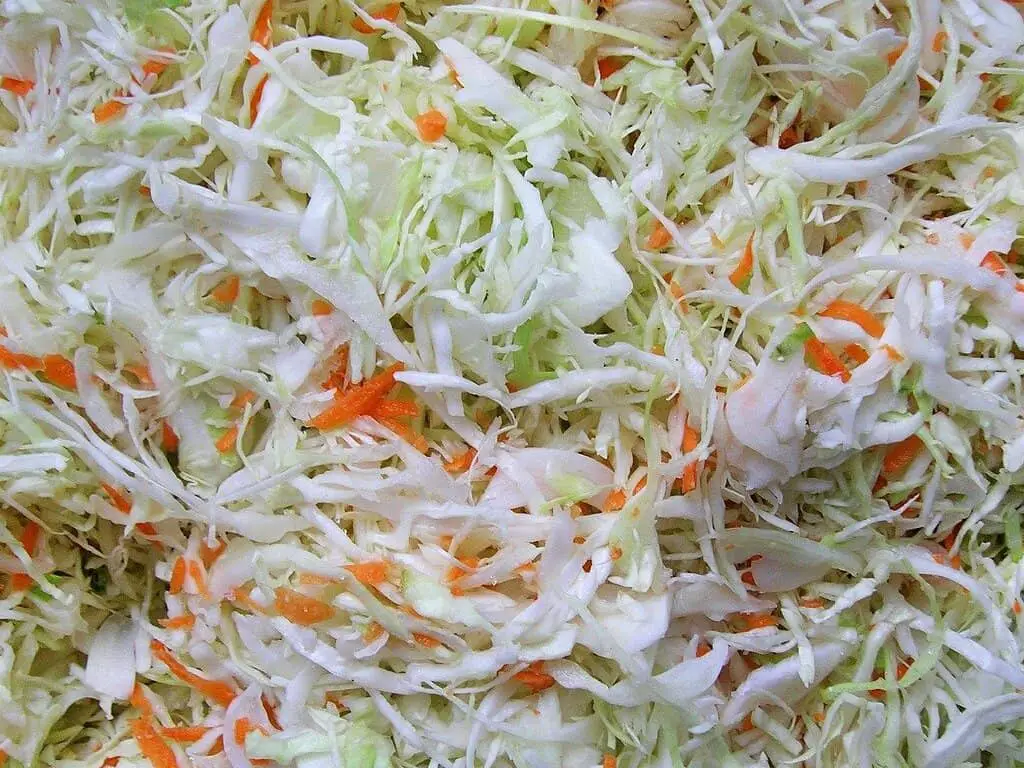
Being a versatile vegetable, you can add cabbage heads to different dishes including stews, soups, salads, slaws, and sauerkraut.
Top Posts
What is a Mulch and How to Apply It
All about Loam Soil

